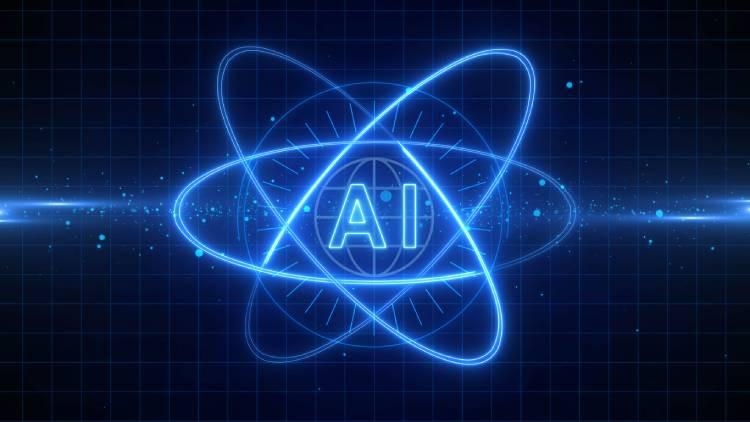UK Leverages Nuclear Energy for AI and Data Centre Growth
Insights | 22-01-2025 | By Robin Mitchell

While AI has traditionally relied on conventional power grids, the exponential increase in computational demands has prompted the search for alternative, reliable, and large-scale energy solutions. Recently, the UK government unveiled a groundbreaking plan to integrate nuclear energy with AI by powering a new data center through small modular reactors—an approach that could significantly transform how AI systems operate and evolve.
Key Things to Know:
- AI's growing energy demands are pushing the search for innovative and sustainable energy solutions.
- The UK is pioneering the integration of nuclear energy with AI, leveraging small modular reactors (SMRs) to power advanced data centres.
- Nuclear energy offers reliability and scalability, addressing the constant processing power needs of AI systems while reducing carbon emissions.
- Ethical, strategic, and environmental considerations are vital as the UK balances nuclear adoption with renewable energy alternatives for a sustainable future.
What challenges does AI currently face in meeting its burgeoning energy needs? How might nuclear energy reshape the AI ecosystem, and what are the broader implications for sustainability, cost, and policy? The following article delves into these crucial questions, exploring how the UK’s pivot to nuclear power could redefine the trajectory of AI innovation and infrastructure.
What Challenges Does AI Face?
The rapid growth of Artificial Intelligence (AI) has established it as a key player in numerous industries, reshaping how businesses operate and how people live their lives. From virtual assistants to predictive maintenance systems, AI has become a vital component of modern technology, and its influence is only set to continue growing. However, as AI continues to dominate the technological landscape, it also faces several challenges that must be addressed for it to continue to grow and improve.
One of the major challenges faced by AI is the substantial amount of energy it consumes. Training large-scale AI models, such as GPT, requires massive amounts of computational power and energy, resulting in a considerable carbon footprint. The data centers that house these models are also major consumers of energy, with the constant need for electricity putting a strain on the power grid. The high operational costs associated with running data centers can also make it difficult for businesses to adopt AI solutions, which may limit their ability to grow and improve.
The constant need for electricity to power data centers poses several challenges for grid stability. The peak energy usage during AI model training can be unpredictable, making it difficult for grid operators to meet the demand for electricity. In regions with limited power infrastructure, the strain on the grid can be even more pronounced, resulting in frequent power outages and disruptions to service. This can have serious consequences for businesses that rely on AI solutions, as well as for individuals who use AI-powered services such as virtual assistants and predictive maintenance systems.
The energy sources used to power AI systems also present multiple challenges. The reliance on non-renewable energy sources such as coal and gas contributes to climate change, which can have serious consequences for the environment and human health. Transitioning to renewable energy sources such as solar and wind is crucial for reducing the carbon footprint of AI systems, but this transition can also present challenges. The intermittent nature of renewable energy sources can make it difficult to meet the constant demand for electricity, and the high upfront costs associated with installing renewable energy systems can make it difficult for businesses to adopt them.
Could UK Turn To Nuclear Energy?
The UK is set to become the world's first nation to integrate nuclear power with artificial intelligence. In a move that could see a new era of energy production, the UK government has announced plans to utilise nuclear energy for a new data center project that will house the latest AI systems. The data center, which will be located in Culham, will be the first of its kind and will be powered by small modular reactors that utilise nuclear fission technology.
Aligning with Sustainability Goals
The integration of nuclear energy with AI also aligns with the UK government’s commitment to pioneering sustainable technological advancements. The establishment of the AI Growth Zone in Culham underlines this ambition, as it aims to foster public-private partnerships to accelerate the deployment of cutting-edge data centres. This initiative supports national priorities in research, energy efficiency, and economic growth, as highlighted in the government’s AI Opportunities Action Plan.
The move comes as the UK government looks to boost the country's technology growth and AI ecosystem. The new project will not only provide a home for the latest AI systems but will also attract technical talent to the UK. The government has also announced plans to expand supercomputing projects and utilise AI for public services. The introduction of the new data center is expected to see the creation of thousands of new jobs in the tech industry.
Reducing Carbon Intensity in AI Operations
Beyond its immediate technological benefits, the project represents a strategic step in reducing the carbon intensity of AI operations. By leveraging small modular reactors, the data centre can operate with a significantly lower carbon footprint compared to traditional energy sources. This approach not only aligns with global sustainability goals but also ensures energy security amidst rising computational demands.
The UK government has also announced plans to explore the use of small modular reactors to power the data center. These reactors are significantly smaller than traditional nuclear reactors and are designed to be more cost-effective. They are also able to be manufactured in factories and transported to site for installation, making them a more practical option for the UK.
Building a Talent Pipeline for Innovation
Additionally, the move towards small modular reactors is bolstered by the government’s emphasis on creating a robust talent pipeline for the AI and nuclear sectors. Initiatives such as scholarships and AI fellowship programmes aim to ensure that the UK remains a leader in both technological and infrastructural innovation, positioning it as a global hub for cutting-edge research.
The use of nuclear energy to power the data center has been met with both support and opposition. While some have praised the move as a major step in the development of AI, others have expressed concerns over the safety of nuclear energy. The use of small modular reactors will help to address these concerns as they are designed to be safer than traditional reactors.
Addressing safety concerns remains a core focus of the UK’s strategy. Enhanced safety protocols, informed by ongoing research through the AI Safety Institute, are being integrated into reactor operations. This proactive approach ensures that any risks associated with nuclear energy are mitigated effectively, building public trust and enabling wider acceptance of this innovative energy solution.
Positioning the UK as a Global AI Leader
The introduction of the new data center is expected to see the UK become a leader in the field of AI. The use of nuclear energy to power the data center will also help to reduce the UK's reliance on fossil fuels and move towards a more sustainable future. The new data center is expected to be operational by 2027 and will be a major boost to the UK's tech industry.
By 2027, the Culham data centre is expected to serve as a benchmark for sustainable energy practices in high-demand sectors. With its emphasis on using nuclear power, it will showcase the feasibility of combining energy reliability with technological scalability, demonstrating how AI and nuclear energy can co-evolve to address some of the most pressing challenges in energy and innovation.
Is Nuclear The Answer?
The question of whether nuclear energy is the best solution to meet the energy demands of AI remains a topic of contentious debate, but despite strong resistance against its use, the increasing energy demands of AI and the need for sustainable energy sources have led to a renewed interest in nuclear energy as a potential solution. For example, some of the biggest advantages of nuclear energy include its reliability, scalability, and low carbon emissions.
Nuclear energy is also a reliable source of power, providing a stable and uninterrupted supply. This is particularly important for AI systems that require constant processing power and data transfer. The scalability of nuclear energy is another crucial benefit, as Small Modular Reactors (SMRs) can be easily transported and installed, providing a flexible solution for meeting energy demands.
Challenges and Drawbacks of Nuclear Energy
The potential drawbacks of nuclear energy include its high upfront costs, safety and waste concerns, and regulatory challenges. The high costs of development and infrastructure can make it difficult for businesses to adopt nuclear energy, and the long-term management of radioactive waste remains a crucial challenge. Additionally, the lengthy approval processes and political hurdles associated with nuclear energy can slow down its adoption.
Comparing nuclear energy to alternative energy solutions reveals that while it has a lower carbon footprint than fossil fuels, it is not as environmentally friendly as renewable energy sources. The role of energy efficiency improvements in AI hardware and infrastructure is also crucial, as reducing energy consumption can help minimise the environmental impact of AI. The possibility of hybrid energy solutions, combining nuclear and renewables, is also an area of interest, as it could provide a more sustainable and reliable source of energy.
Ethical and Strategic Considerations
Ethical and strategic considerations also play a crucial role in determining whether nuclear energy is the best solution to meet AI's energy demands. Balancing the urgency of AI's energy needs with the long-term implications of nuclear adoption is essential, as the adoption of nuclear energy could have crucial consequences for future generations. Addressing societal concerns about prioritising nuclear over renewables is also critical, as public perception and acceptance of nuclear energy can significantly impact its adoption. Strategic alignment of nuclear power with global sustainability goals is also essential, as nuclear energy can play a vital role in reducing carbon emissions and mitigating climate change.
Nuclear energy may be a viable option for meeting AI's energy demands, but it might not be the sole solution. A diversified energy strategy that incorporates nuclear energy, renewable energy sources, and energy efficiency improvements is essential for creating a sustainable and reliable energy future.

